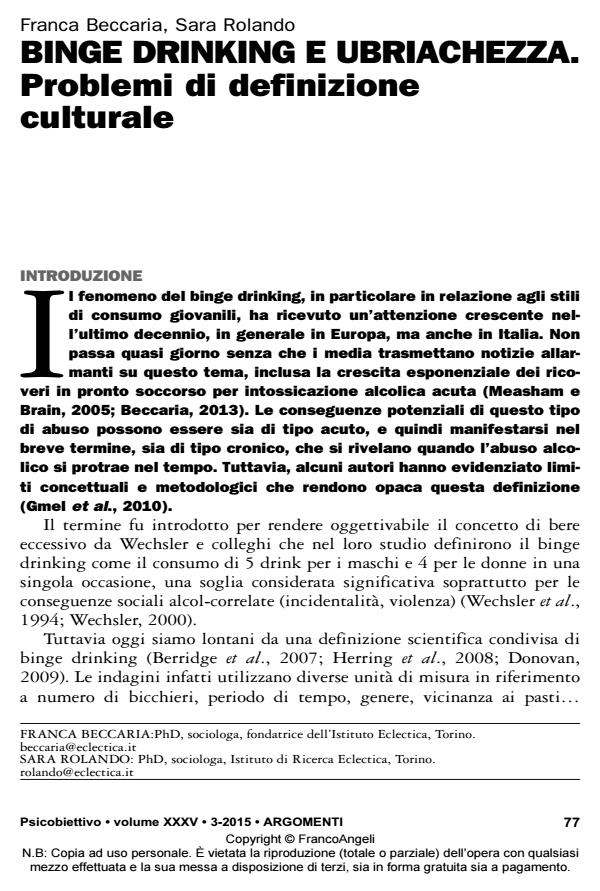Binge drinking and drunkenness. problems of cultural definition
Journal title PSICOBIETTIVO
Author/s Franca Beccaria, Sara Rolando
Publishing Year 2016 Issue 2015/3
Language Italian Pages 17 P. 77-93 File size 152 KB
DOI 10.3280/PSOB2015-003005
DOI is like a bar code for intellectual property: to have more infomation
click here
Below, you can see the article first page
If you want to buy this article in PDF format, you can do it, following the instructions to buy download credits

FrancoAngeli is member of Publishers International Linking Association, Inc (PILA), a not-for-profit association which run the CrossRef service enabling links to and from online scholarly content.
The term binge drinking has been increasingly used by the scientific community to measure the excessive drinking and by the media to describe the youth drinking and an alleged increasing propensity of young people towards drunkenness. However, statistics show discrepancies and raise questions which the authors tried to respond through a qualitative mixed-method research based on 134 interviews and a web forum aimed at young people (aged 15-24 years). The results show that in the category of binge drinking includes very different consumption patterns not necessarily intoxication-oriented, and that it is not correct to speak of "normalization" of excessive drinking as a negative conception of drunkenness persists among young people.
Keywords: Binge Drinking; Drunkenness; Intoxication; Excessive Drinking; Heavy Dring; Drinking Culture
Franca Beccaria, Sara Rolando, Binge drinking e ubriachezza. Problemi di definizione culturale in "PSICOBIETTIVO" 3/2015, pp 77-93, DOI: 10.3280/PSOB2015-003005